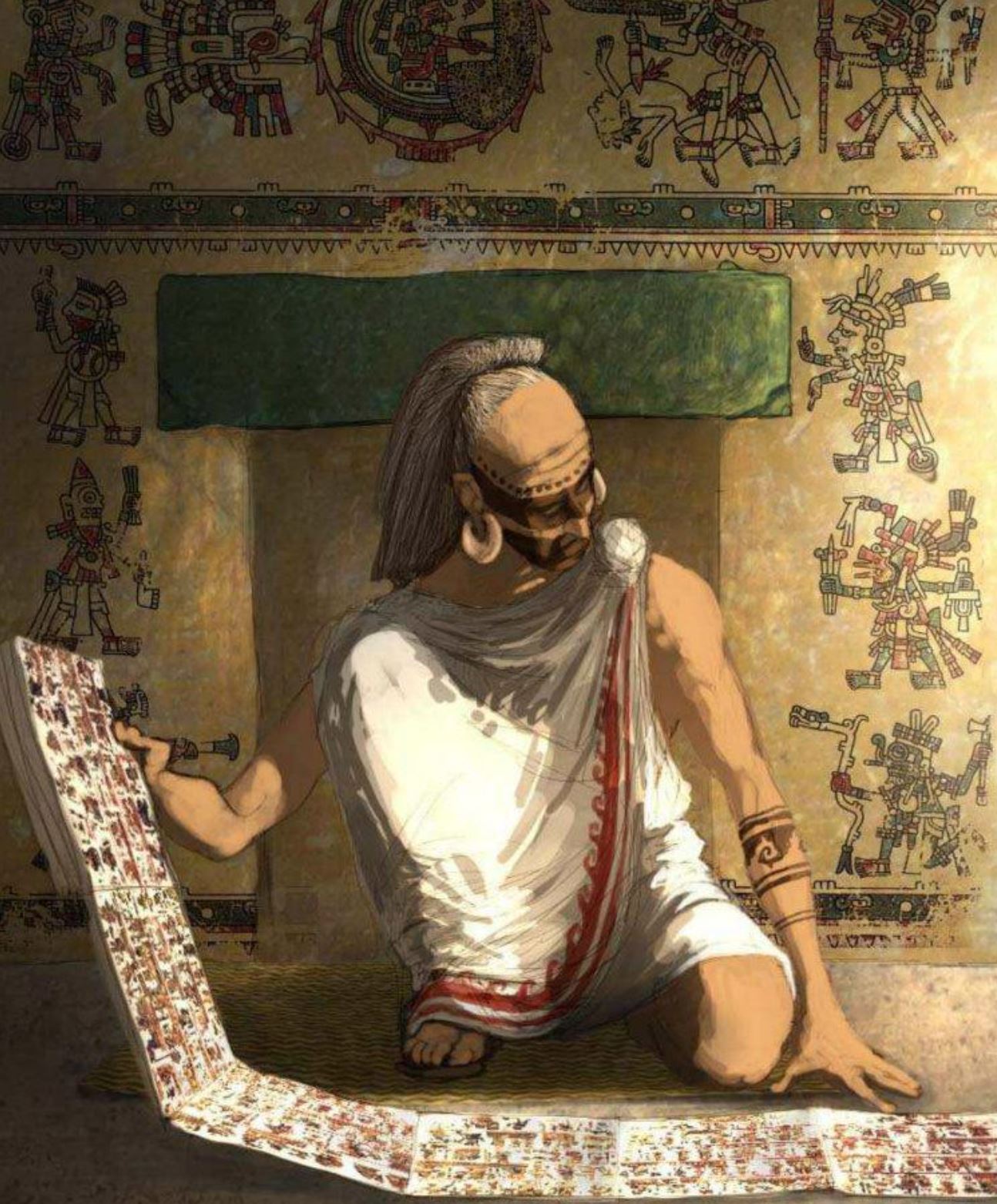Tonalamatl
by hughpierre
Purpose
A divinatory, screen-fold almanac used to cast horoscopes and discern the future.
For the Sang are given their first named in life after the day upon which they were born. Similarly, those named individuals can figure out what an individual’s future life might entail. More than discovering hidden meanings in current and past events; everyday folks derive their given day-name when they are ritually bathed by a daykeeper (tonalpouhque) four days after ones birth.
Document Structure
Clauses
The 260-day count starts in the lower left hand corner of page one, one row up from the bottom. The top and bottom rows have mantic and ritual information related to the five days listed between them. The cells contain the day-sign in the order of:
As it is a long strip that is folded at intervals, the first 13-day period continues across the first two pages and then the second 13-day period continues across pages 3 and 4. This process continues until the end of page 26. Therefore, the 20 trecenas that make up the 260 days are shown in totality.
1) Cipactli
2) Ehecatl
3) Calli
4) Cuetzpallin
5) Coatl
6) Miquiztli
7) Mazatl
8) Tochtli
9) Atl
10) Itzcuintli
2) Ehecatl
3) Calli
4) Cuetzpallin
5) Coatl
6) Miquiztli
7) Mazatl
8) Tochtli
9) Atl
10) Itzcuintli
11) Ozomatli
12) Malinalli
13) Acatl
14) Ocelotl
15) Cuauhtli
16) Cozcacuauhtli
17) Ollin
18) Tecpatl
19) Quiahuitl
20) Xochitl
12) Malinalli
13) Acatl
14) Ocelotl
15) Cuauhtli
16) Cozcacuauhtli
17) Ollin
18) Tecpatl
19) Quiahuitl
20) Xochitl
References
These day-signs and glyphs are part of an artificial system in allusion to human pregnancy. These are sacred periods of time dedicated to any number of supernaturals and as a means of organizing yearly activities such as the collecting of tribute and determining when principal rituals are conducted.
Portions of the tonalamatl pages are dedicated to the patron deities of these particular 13-day periods. These include the:
- Rain and water deities of Atlcahualo, Tozoztontli, Etzalcualiztli, Tecuihuitontli, Tepeilhuitl and Atemoztli.
- Earth and agricultural deities of Hueytozoztli, Hueytecuilhuitl, Ochpaniztli and Tititl.
- Fire deities of Izcalli, Xocotlhuetzi and Teotleco.
Publication Status
Priesthood
Possession of the text is generally restricted to the priesthood. Though some are more stingy with showcasing it than others and can get highly offended at petty offenses.Historical Details
Background
The tonalamatl is structured around the sacred 260-day year: the tonalpohualli. This 260-day year consists of 20 trecena of 13 days each. Each page of a tonalamatl represents one trecena adorned with a painting of that trecena's reigning deity and decorated with the 13 day-signs and 13 other glyphs.
Term
Xihuitl
It is a cycle most similar to the solar calendar's 365/6-day years. It also means turquoise or greenstone artists regularly used small turquoise blue dots or painted blue gems to represent years. Every cycle is called the xiuhpohualli made up of eighteen twenty-day periods. These eighteen xihuitl are called by specific names that reference great religious observances and festivals celebrated during their course or at their conclusion.
Alternate Names
- Book of the Days
- Pages of Days
- Day Counts
Type
Text, Religious
Medium
Paper
Myth
Location
Signatories (Organizations)





Comments